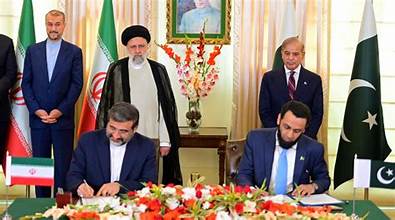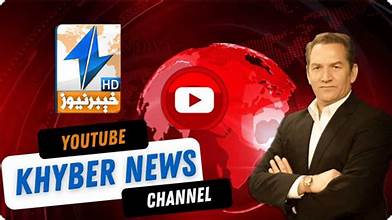In a significant step toward enhancing bilateral relations, Pakistan and the United States have signed strategic Memorandums of Understanding (MoUs) focused on cooperation in the field of critical minerals. This move is being hailed as a milestone in diplomatic, economic, and industrial collaboration, paving the way for both nations to strengthen their strategic partnership. With the global demand for critical minerals reaching unprecedented levels, this cooperation highlights the importance of resource-sharing and sustainable development in the rapidly changing geopolitical landscape.
The Importance of Critical Minerals
Critical minerals are essential raw materials that serve as the backbone of modern technologies and industries. These include rare earth elements, lithium, cobalt, graphite, and nickel, among others. They are crucial for the production of electric vehicle batteries, renewable energy systems, advanced electronics, aerospace equipment, and defense technologies.
The growing global transition toward green energy has further intensified demand for these minerals. Countries around the world are racing to secure reliable supply chains to ensure their technological and industrial growth. For Pakistan and the US, cooperation in this sector provides mutual benefits: Pakistan gains technological expertise and investment opportunities, while the US secures access to untapped mineral reserves in a strategically located country.
Pakistan’s Untapped Mineral Wealth
Pakistan is widely recognized as being rich in natural resources, yet much of its mineral wealth remains underexplored or underutilized. Regions such as Balochistan and Gilgit-Baltistan are known to contain significant deposits of copper, gold, lithium, and rare earth elements. Despite this potential, challenges such as limited infrastructure, inadequate investment, and governance issues have hindered large-scale development of the mining sector.
The MoUs with the US offer Pakistan an opportunity to attract foreign investment, introduce modern mining technologies, and create a transparent framework for resource management. With proper utilization, Pakistan’s mineral wealth could become a cornerstone of its economic growth and industrialization.
US Interests in Critical Minerals
The United States, on the other hand, has long been seeking to diversify its sources of critical minerals to reduce dependence on limited suppliers. Currently, China dominates the global rare earth and critical minerals market, creating concerns for the US and its allies regarding supply chain security. By collaborating with Pakistan, Washington aims to develop alternative sources while also strengthening its partnership with a strategically important South Asian nation.
This cooperation aligns with the US’s broader strategy of building resilient supply chains for clean energy technologies, defense equipment, and digital industries. For the US, Pakistan’s geographical position also offers logistical advantages, acting as a bridge between Central Asia, the Middle East, and South Asia.

Strengthening Bilateral Relations
Beyond the economic and industrial benefits, the signing of these MoUs symbolizes a strengthening of bilateral ties between Islamabad and Washington. Relations between the two countries have seen ups and downs over the past decades, shaped by shifting geopolitical interests, security concerns, and regional developments.
The critical minerals partnership opens a new avenue of cooperation focused on mutual economic growth rather than just security or defense. It marks a shift toward broader engagement, addressing the evolving needs of the 21st century. By collaborating in this high-value sector, both nations demonstrate a willingness to redefine their partnership on terms of economic interdependence, technological innovation, and sustainable development.
Economic and Industrial Prospects for Pakistan
For Pakistan, the MoUs represent much more than international cooperation—they signify the potential to transform its economic landscape. If implemented effectively, the partnership could generate:
- Foreign Direct Investment (FDI): Enhanced cooperation is expected to attract American companies interested in mining, exploration, and processing industries.
- Technology Transfer: Access to modern mining, refining, and sustainability practices could help Pakistan build a competitive mining sector.
- Employment Opportunities: Large-scale mining and processing projects could create jobs in both skilled and unskilled sectors.
- Export Growth: By developing its critical minerals industry, Pakistan could emerge as a key supplier in the global market, boosting export revenues.
- Infrastructure Development: New projects would require roads, railways, and energy supplies, further improving connectivity in underdeveloped regions.

Challenges Ahead
While the potential benefits are immense, the road ahead is not without challenges. Several key issues will need to be addressed for the MoUs to deliver tangible results:
- Regulatory Framework: Pakistan will need to establish transparent and investor-friendly policies to encourage international companies to operate within its borders.
- Environmental Concerns: Mining activities, if not properly regulated, could lead to ecological damage. Sustainable practices must be a priority.
- Security Issues: Some mineral-rich regions of Pakistan face security challenges, which may deter foreign investors unless addressed effectively.
- Capacity Building: Pakistan must invest in workforce training and skill development to ensure its citizens can fully benefit from new opportunities.
- Political Stability: Consistent policies and political stability are crucial to sustain long-term investment.
Regional and Global Implications
The Pakistan-US critical minerals cooperation also has broader regional and global implications. For one, it positions Pakistan as a significant player in the global supply chain of critical minerals, attracting attention from other countries seeking partnerships. Additionally, it strengthens Pakistan’s role in the global green energy transition by contributing essential materials for renewable technologies.
At the geopolitical level, this cooperation diversifies supply chains away from China’s dominance, giving the US and its allies greater security and flexibility. At the same time, Pakistan benefits from balancing its foreign relations, as it already maintains economic ties with China through the China-Pakistan Economic Corridor (CPEC). The critical minerals MoUs with the US reflect Islamabad’s efforts to expand its international partnerships without relying on a single partner.
Looking Ahead
The signing of MoUs is only the first step in a long process. The success of this initiative will depend on how effectively both countries implement the agreements, attract investment, and manage challenges. For Pakistan, the opportunity to leverage its mineral wealth could prove transformative if accompanied by sound governance, robust infrastructure development, and environmental safeguards.
For the United States, success will be measured by whether this cooperation contributes to building secure, resilient supply chains while reinforcing its ties with Pakistan. The MoUs also open doors for future collaboration in renewable energy, clean technology, and industrial modernization.
Conclusion
The strategic partnership between Pakistan and the US on critical minerals represents a forward-looking approach to bilateral relations. It moves beyond traditional areas of cooperation, focusing instead on economic and technological collaboration that serves the interests of both nations.
By tapping into Pakistan’s untapped mineral wealth, the US gains a new partner in its quest for supply chain resilience, while Pakistan secures investment, technology, and opportunities for sustainable growth. If implemented effectively, these agreements could mark the beginning of a new chapter in Pakistan-US relations—one centered on mutual prosperity, industrial advancement, and a shared commitment to shaping a sustainable future.



